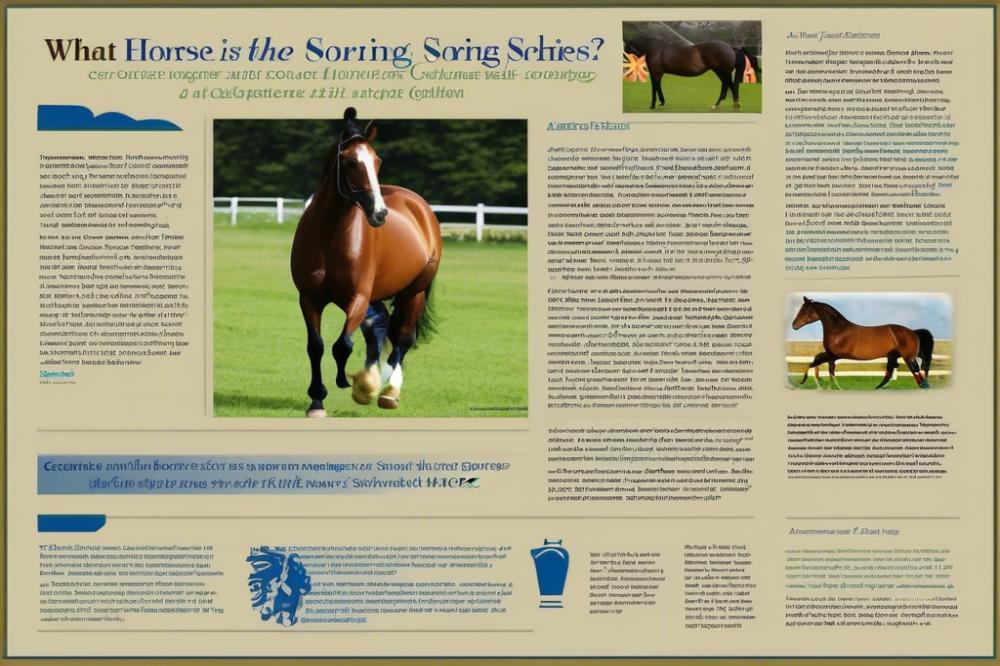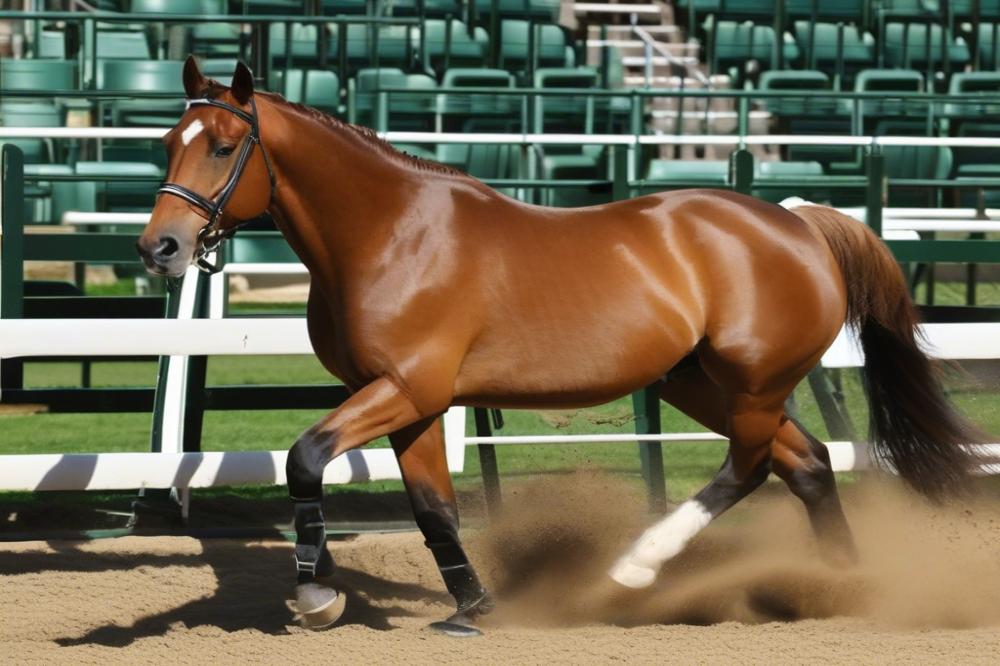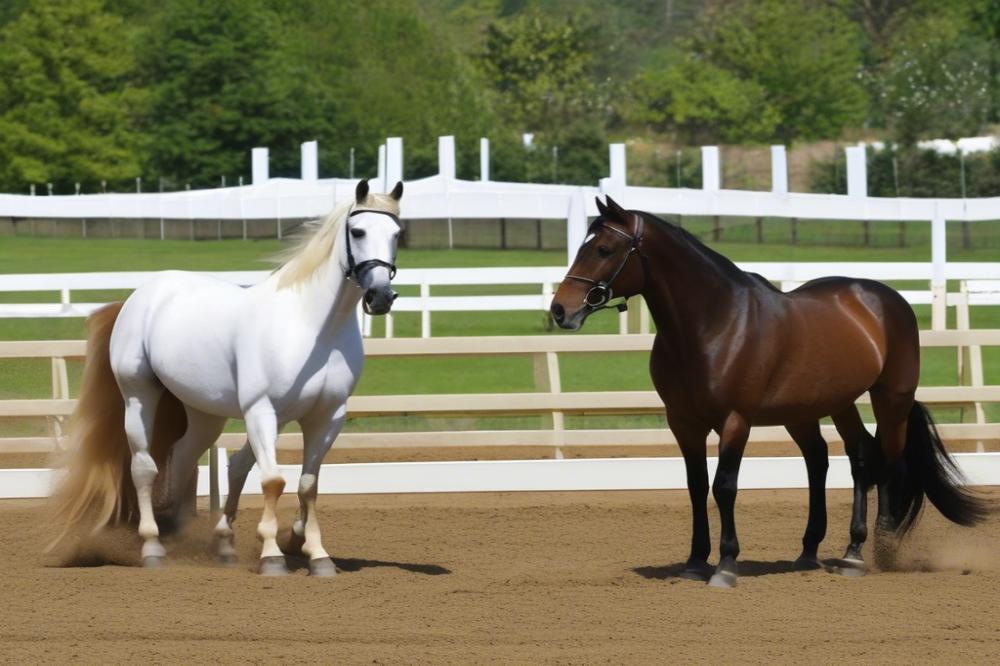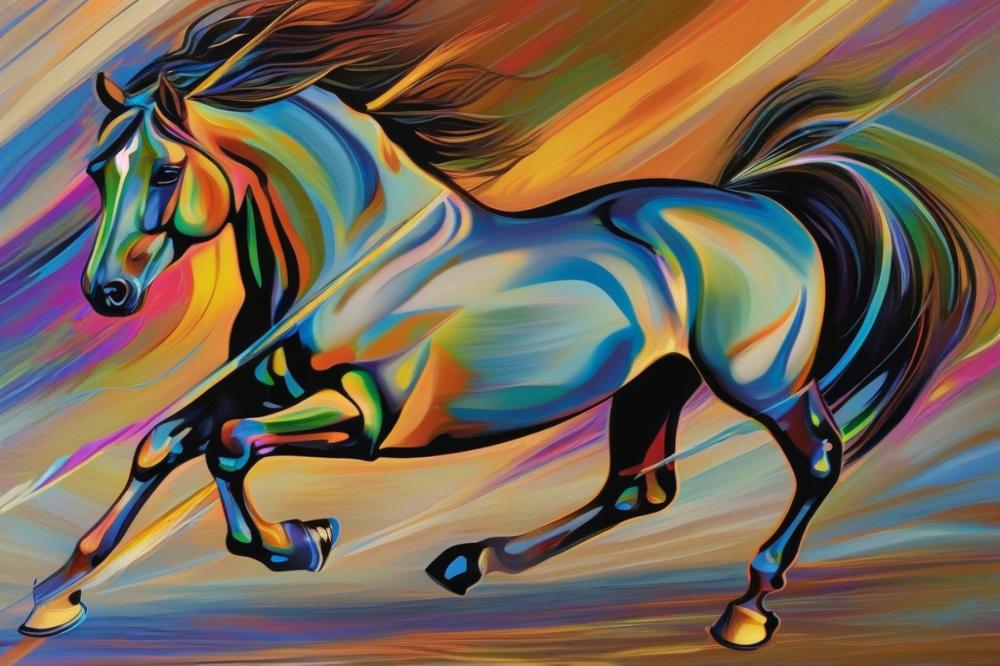What Is Horse Soring?
Have you ever seen a horse move with grace, its legs seemingly dancing in rhythm? It’s a beautiful sight, one that many people enjoy when watching equestrian events. Unfortunately, some practices in the horse industry can spoil that joy. One such practice is a troubling technique that, sadly, some use to enhance a horse’s movement. This method, known as horse soring, causes pain and distress, all in the name of achieving a specific look in competitions.
Horse soring refers to the use of chemicals or devices to irritate a horse’s legs or hooves. The intention? To make the animal lift its front legs higher than it naturally would. Such methods have historical roots, having emerged in certain equestrian circles as a way to create a flashy performance. While it might have been more common in the past, the prevalence of horse soring still lingers in some areas today.
The reasons behind this troubling practice often relate to profit and competition. Some trainers believe that soring can make their horses more appealing to judges, especially in certain show categories. Ultimately, the goal is to win ribbons, accolades, and the admiration of the crowd. Yet, the purpose behind these actions raises questions. Is it worth sacrificing horse health for momentary glory? Many argue that chasing awards this way must come with serious ethical considerations.
The impact of soring on horses is profound, potentially leading to both physical and emotional suffering. Horses can suffer from injuries, chronic pain, and anxiety as a result of this treatment. In the long run, what’s gained from this short-lived advantage could cause lasting harm to these beautiful creatures. As responsible individuals involved in horse care, we must advocate for the welfare of these magnificent animals. It’s important that we stand up for equestrian ethics and promote practices that prioritize horse health and well-being.
When considering the issue, it’s almost like comparing a camel vs horse size comparison. Just as it’s essential to recognize the differences and unique needs of each animal, we must also discern the best practices for maintaining the dignity and health of our horses. Imagine a brown horse, standing tall and proud, moving freely without pain. That’s the vision we should strive for in the equestrian world. Let’s make it our mission to protect these noble animals from any form of abuse, ensuring their lives are filled with care, compassion, and a whole lot of love.
Understanding Horse Soring

Mechanisms of Horse Soring
Horse soring is a method that some people use to make horses perform a certain way. This technique is often painful. It usually involves irritating the horse’s legs and hooves. Why would anyone do this? Well, some trainers want to enhance a horse’s action in shows. They aim for a high-stepping gait that attracts attention. Unfortunately, the price is often the horse’s comfort and well-being. That’s a high cost to pay for a little shine in the spotlight.
Common Practices Used to Achieve Soring Effect
Various techniques exist that promote this harmful practice. Some trainers apply harsh materials to the legs, causing irritation. Others might inject chemicals that create discomfort. The goal is for the horse to lift its feet more dramatically. Achieving this unnatural look involves a dangerous journey. Many people involved in horse training have strong opinions about these practices. They claim their methods lead to success in the show world. However, one must wonder about the hidden costs involved.
Types of Horses Affected
Not all horses fall victim to these techniques. Certain breeds are targeted more often in competitive circles. Tennessee Walking Horses are particularly vulnerable. They are known for their flashy movements. Other breeds, like some American Saddlebreds, can also face the same dark fate. Trainers and owners may put greatness over the care of their animals. It’s a sad truth that impacts equine welfare deeply.
Signs and Symptoms of Horse Soring
Those who are familiar with horse care know a few tell-tale signs. An affected horse might display limping or favoring a leg. Changes in their gait can be noticeable. They may also flinch when their legs are touched. Observing a horse exhibiting these behaviors can be concerning. Protection of horse health should always come first. Equestrian ethics encourage kindness and respect for these magnificent animals. Recognizing these symptoms is a crucial step in promoting better treatment for horses everywhere.
Legal and Ethical Considerations

Overview of Laws Prohibiting Horse Soring
Laws against soring exist to protect horses and promote equine welfare. The Horse Protection Act (HPA), enacted in 1970, is a key piece of legislation. It bans the use of any device or method that intentionally causes pain to horses at shows, exhibitions, or sales. Officials inspect competitors to make sure they’re following these regulations. Violators face hefty fines and can even lose their ability to participate in events.
Key Organizations Involved in Anti-Soring Efforts
Several organizations unite in the fight against harmful practices like this. The Humane Society of the United States is a leading voice in promoting horse care and fighting cruelty. They work with lawmakers to tighten laws and educate the public. The American Veterinary Medical Association also stands firm against soring. Their goal is to protect horse health and provide ethical guidelines for trainers and owners alike. Local rescue groups and animal rights organizations also play essential roles in raising awareness about equestrian ethics.
Consequences for Those Who Practice Soring
The penalties for engaging in this practice are serious. Individuals caught can face fines of thousands of dollars. In some cases, they even risk losing their licenses to train or show horses. Additionally, the stigma attached to being associated with such cruelty can haunt anyone involved. Many people in the equestrian community think it reflects poorly on trainers and their reputations. This means potential clients could steer clear of anyone linked to these illicit methods.
Ethical Implications of Horse Soring
Horse soring raises many ethical questions about how we treat animals. It challenges our beliefs on humane horse training. Should the quest for ribbons justify causing pain? Many argue that the health and well-being of horses must come first. Practicing kindness toward these majestic creatures should always take precedence. After all, love for horses should shine in every interaction. Choices made today affect future generations of horses and riders alike. Ignoring ethical considerations can lead to a cycle of suffering, hurting not just horses but also the integrity of the sport.
Health Effects on Horses

Physical Injuries and Long-Term Damage
Horse soring often results in serious physical injuries. Painful chemicals and devices are used to create an exaggerated gait. These practices can cause severe burns or wounds on a horse’s legs. In some cases, damage becomes permanent, leaving the horse with lasting scars. Limbs might suffer from stress fractures or joint problems, making normal movement difficult. The aftermath can lead to a decline in overall horse health, which ultimately affects their happiness. Imagine walking with a sore foot; it’s not comfortable! A horse in pain cannot perform their best.
Psychological Effects on Horses
Emotional distress can be just as damaging as physical injuries. Horses are sensitive creatures, and their emotional well-being is crucial for their overall health. When subjected to harsh training methods, they might become anxious or fearful. Thoughts of looming pain can lead to a lack of trust in their handlers. Picture a horse that flinches at the slightest touch; that’s a relationship in trouble. Anxiety doesn’t just affect their behavior; it can also hinder their ability to learn during horse training. Equine welfare matters, and a scared horse is often a poor performer.
Impact on Performance and Behavior
Subpar performance can arise from both physical and psychological issues. A horse that is in pain won’t be able to compete as effectively as it could. This results in lowered competition results, which can affect their value and the owner’s investment. Unusual behavior might also manifest. Horses may become bolshy or unmanageable, issues that can frustrate riders. A once-enthusiastic partner can turn into a reluctant performer, making riding less enjoyable. Strong connections in equestrian ethics highlight that caring for a horse means prioritizing their health, both physical and mental. Quality horse care is about more than just feeding and grooming; it involves respecting the animal’s needs.
Alternatives to Horse Soring
Humane Training Techniques
There are better ways to train horses without causing them pain. Positive reinforcement is one effective method. When a horse does something right, rewarding them with treats can be more motivating than using harsh methods. Equestrians who focus on trust build a stronger bond with their horses. Instead of punishing mistakes, it helps to guide them gently. Remember, a happy horse is more willing to learn!
Natural Hoof Care Approaches
Taking care of a horse’s hooves is vital for their overall health. Natural hoof care emphasizes trimming and maintaining hooves without harsh chemicals or invasive techniques. Holistic practices consider the horse’s environment, nutrition, and lifestyle. Using simple tools can keep hooves healthy and strong. Proper care prevents issues that could otherwise lead to unnecessary pain. A sound hoof means a happier horse!
Veterinarian Recommendations
Consulting a veterinarian is always smart when it comes to equine welfare. Regular check-ups can spot problems before they escalate. Vets can provide insight into proper training techniques and care routines. Understanding horse health is crucial to keeping these magnificent animals in top shape. If someone is unsure about a horse’s behavior, reaching out to a professional is the way to go. They have the expertise to guide horse owners toward humane practices that benefit both horse and rider.
Current Status and Future Prospects
Current Trends in the Horse Industry Regarding Soring
People are becoming more aware of the problems caused by soring. The awareness of equine welfare is growing, and more horse lovers are speaking up against cruel practices. Many trainers and owners now prioritize horse health. They focus on gentle training methods instead of gimmicks that hurt the animals. Change is on the horizon, and that change is often led by a new generation of equestrians. These horse enthusiasts value ethics over winning at all costs.
Events in the horse world are changing too. Certain competitions now have stricter rules, which seek to protect horses. Many associations are beginning to ban certain training techniques associated with the practice. A sense of community has developed around promoting the joy of healthy horse care. Horses trained for their talents rather than appearance are quickly gaining respect.
Advocacy and Public Awareness Efforts
Organizations dedicated to horse welfare are working tirelessly to spread knowledge. People share stories about the soring impact on horses through social media. Videos and testimonials flood the internet, highlighting the emotions attached to these animals. The power of a good story can change minds, and many advocates are taking this approach.
Grassroots campaigns are igniting passion among horse lovers. School programs teach children about equestrian ethics, helping a new generation understand the importance of kindness. Celebrities and influencers supporting positive change help the message reach broader audiences. With more eyes on the issue, a culture shift seems to be blossoming.
Future Outlook for Prevention and Regulation
Looking ahead, we can expect more regulations aimed at preventing cruel practices. Suggested reforms in the industry could favor horse training that builds trust rather than fear. These changes will hopefully lead to healthier horses and happier riders. With enough push from the public, lawmakers might take meaningful steps toward stricter rules.
Technology may lend a hand too. Experts are exploring high-tech ways to monitor horse health and training methods. Imagine a world where a smartwatch could help keep tabs on a horse’s well-being. This could help identify any harmful practices before they cause damage. Innovations like this would be a win-win for everyone involved.
With ongoing efforts from advocates and the community, the future looks brighter for our equine friends. People are starting to understand that winning isn’t worth the cost of a horse’s happiness. Conversations are changing, and we’re beginning to see the power of empathy in action. The road ahead may have bumps, but it seems like more and more folks are determined to make horse care a priority.
Wrapping Up: A Call for Horse Welfare
In summary, it’s crucial to understand what horse soring is and why it’s harmful. This practice, which involves causing pain to horses to achieve a high-stepping gait, is not just a quirky term in the horse world. It’s a serious matter that affects the health and well-being of these magnificent creatures. People often say that horses are like our partners; they trust us, and we owe it to them to treat them right.
Many equestrians and horse lovers can reminisce about the joy of a sunny afternoon at a horse kids show. The excitement in the air as riders display their skills can bring a smile to anyone’s face. However, behind that joy, we must never turn a blind eye to practices that endanger these gentle animals. Ignorance is not bliss when it comes to their welfare!
Let’s take a moment to reflect. Horses are not just beautiful creatures prancing around; they carry stories, sweat, and many dreams along with their riders. Whether your ideal horse is a majestic steed with elvish horse names or a trusty pony, their care should always come first. We need to unite in advocating for better regulations and the cessation of practices like soring.
Join the movement! Speak out against any form of cruelty and support regulations that protect horseback riding and training. If you encounter a horse show or event, raise awareness about ethical practices. Remember, every kind action counts and can lead to a ripple of positive change. After all, if we don’t champion these causes, who will? Let’s ensure all our equine friends feel safe, respected, and loved.
In the end, it’s not just about horsemanship; it’s about humanity. Caring for our horses translates into caring for our souls. Together, we can create a world where the hoofbeats echo with joy, not pain.



